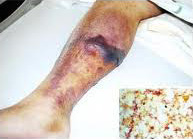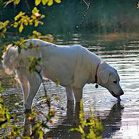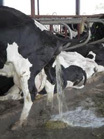|
Public
Information |
|
|
|
Leptospirosis
(Information link: http://nvbdcp.gov.in/Doc/guidelines%20for%20treatment%20of%20Dengue.pdf) |
|
|
|
What is Leptospirosis? Leptospirosis is an infectious disease caused by a type of bacteria called a spirochete. Leptospirosis can be transmitted by many animals such as rats, skunks, opossums, raccoons, foxes, and other vermin. It is transmitted though contact with infected soil or water. The soil or water is contaminated with the waste products of an infected animal. People contract the disease by either ingesting contaminated food or water or by broken skin and mucous membrane (eyes, nose, sinuses, mouth) contact with the contaminated water or soil. Leptospirosis occurs worldwide, but it is most commonly acquired in the tropics. The U.S. Centers for Disease Control and Prevention states 100-200 cases of leptospirosis are reported each year in the United States, with about 50% of cases occurring in Hawaii. Although the incidence in the United States is relatively low, leptospirosis is considered the most widespread disease that is transmitted by animals in the world. A 2010 outbreak in Michigan caused serious illness in numerous pets, raising concern for the local human population. In 2009, typhoons hit the Philippines, causing a leptospirosis outbreak. The Philippines Department of Health then reported 1,887 cases of leptospirosis, which resulted in 138 deaths. |
|
|
|
What are leptospirosis symptoms and signs? Leptospirosis symptoms begin from two to 25 days after initial direct exposure to the urine or tissue of an infected animal. This can even occur via contaminated soil or water. Veterinarians, pet shop owners, sewage workers, and farm employees are at particularly high risk. People participating in outdoor sporting activities like canoeing, rafting, hiking, and camping can also come into contact with contaminated water or soil. |
|
|
|
The illness typically progresses through two phases: The first phase of nonspecific flu-like symptoms includes headaches, muscle aches, eye pain with bright lights, followed by chills and fever. Watering and redness of the eyes occurs and symptoms seem to improve by the fifth to ninth day. The second phase begins after a few days of feeling well. The initial symptoms recur with fever and aching with stiffness of the neck. Some patients develop serious inflammation of the nerves to the eyes, brain, spinal column (meningitis), or other nerves. Right upper area abdominal pain may occur. Less common symptoms relate to disease of the liver, lungs, kidneys, and heart. Leptospirosis associated with liver and kidney disease is called Weil's syndrome and is characterized by yellowing of the eyes (jaundice). Patients with Weil's syndrome can also develop kidney disease and have more serious involvement of the organs affected. |
|
|




